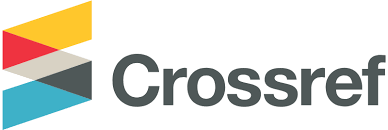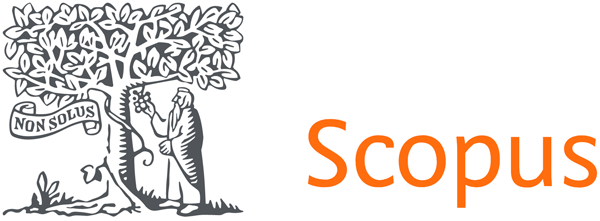DIAGNOSIS SYSTEM DESIGN OF DEPRESSION AND ANXIETY WITH NAÏVE BAYES METHOD
Abstract
Depression and Anxiety are mental illness that arise in the presence of depression and anxiety from within the individual. The depression having features them level a dramatic decline to an interest, trouble sleeping and eat, the guilt or feel having no value self, and usually followed by a feeling of agitated, uneasiness is the norm reasonable like when we will do appearance in front of people. However, for the level of anxiety that must be considered is when the individual experiences an excessive intensity of anxiety unlike other normal individuals. The method in the system used to diagnose depression and anxiety is the Naïve Bayes Method. The process of using the naïve bayes method by using 50 correspondent data then taking 5 samples from the diagnostic results to prove the accuracy of the data generated after being diagnosed, this method can provide diagnosis, then provide therapy as an initial preventive step for sufferers, and as a solution to suppress therapy costs for suffers and sufferers’ choice as the first step before seeing the experts in person.
References
Arifin, Z. (2009). Evaluasi Pembelajaran Penulis. In Direktorat Jenderal Pendidikan Islam Kementerian Agama RI. Bandung: PT. Remaja Rosdakarya.
Atkinson, R. L. (2010). Pengantar Psikologi (W. Kusuma (ed.)). Tangerang: Interaksara.
Chandra, T., Renaldo, N., & Putra, L. C. (2018). Stock Market Reaction towards SPECT Events using CAPM Adjusted Return. Opción, Año 34(Especial No.15), 338–374.
Hermanto, H., & Jollyta, D. (2020). Penerapan Naïve Bayes Pada Sistem Pakar Diagnosa Gangguan Pencernaan Balita. JMApTeKsi, 2(2), 102–106.
Jogiyanto, H. M. (2008). Metodologi Penelitian Sistem Informasi. Yogyakarta: Andi.
Jollyta, D., Gusrianty, G., & Sukrianto, D. (2019). Analysis of Slow Moving Goods Classification Technique: Random Forest and Naïve Bayes. Khazanah Informatika: Jurnal Ilmu Komputer Dan Informatika, 5(2), 134–139. https://doi.org/10.23917/khif.v5i2.8263
Kusumadewi, S. (2003). Artificial Intelligence (Teknik dan Aplikasinya). Yogyakarta: Graha Ilmu.
Ladjamudin, A. B. (2005). Analisis dan Desain Sistem Informasi (Pertama). Yogyakarta: Graha Ilmu.
Lovibond, S. H., & Lovibond, P. F. (1995). Manual for The Depression Anxiety Stress Scales (DASS). New South Wales: Psychology Foundation Monograph.
Mahyuddin, E., Komara, A. H., & Sudarno, S. (2018). Pengaruh Gaya Kepemimpinan, Komitmen Dan Budaya Organisasi Terhadap Motivasi Dan Kinerja Guru SD Se-Kecamatan Rimba Melintang Kabupaten Rokan Hilir. Procuratio: Jurnal Ilmiah Manajemen, 6(4), 456–471.
Marcus, M., Yasamy, M. T., van Ommeren, M., & Chisholm, D. (2012). Depression, a global public health concern. WHO Department of Mental Health and Substance Abuse, 1–8. http://www.who.int/mental_health/management/depression/who_paper_depression_wfmh_2012.pdf
Prasetyo, E. (2012). Data Mining: Mengolah Data Menjadi Informasi Menggunakan Matlab. Yogyakarta: Andi.
Putra, R., & Renaldo, N. (2020). Peningkatan Kepuasan Kerja dan Kinerja Guru melalui Komitmen, Budaya Organisasi, Motivasi, dan Gaya Kepemimpinan Guru SLTA Sederajat di Kabupaten Rokan Hilir. Procuratio: Jurnal Ilmiah Manajemen, 8(1), 125–139.
Rachmadi, F. (2014). Pengaruh Tingkat Intensitas Belajar Terhadap Terjadinya Stres Pada Mahasiswa PSPD 2011 FKIK UIN Syarif Hidayatullah Jakarta.
Rector, N. A., Bourdeau, D., Kitchen, K., & Massiah, L. J. (2011). Anxiety Disorders an Information Guide.
Renaldo, N., Sudarno, S., & Hutahuruk, M. B. (2020). Internal Control System Analysis on Accounts Receivable in SP Corporation. The Accounting Journal of Binaniaga, 5(2), 73. https://doi.org/10.33062/ajb.v5i2.382
Siddik, M., Desnelita, Y., & Gustientiedina. (2019). Penerapan Naïve Bayes untuk Memprediksi Tingkat Kepuasan Mahasiswa Terhadap Pelayanan Akademis. Jurnal Infomedia, 2(4), 89–93. http://e-jurnal.pnl.ac.id/index.php/infomedia/article/view/1892
Siddik, M., Hendri, Putri, R. N., Desnelita, Y., & Guestientiedina. (2020). Klasifikasi Kepuasan Mahasiswa Terhadap Pelayanan Perguruan Tinggi Menggunakan Algoritma Naïve Bayes. Journal of Chemical Information and Modeling, 01(01), 1689–1699.
Sutejo, S. (2018). Keperawatan Jiwa, Konsep dan Praktik Asuhan Keperawatan Kesehatan Jiwa: Gangguan Jiwa dan Psikososial. Yogyakarta: Pustaka Baru Press.
Copyright (c) 2021 Journal of Applied Business and Technology

This work is licensed under a Creative Commons Attribution-ShareAlike 4.0 International License.




















